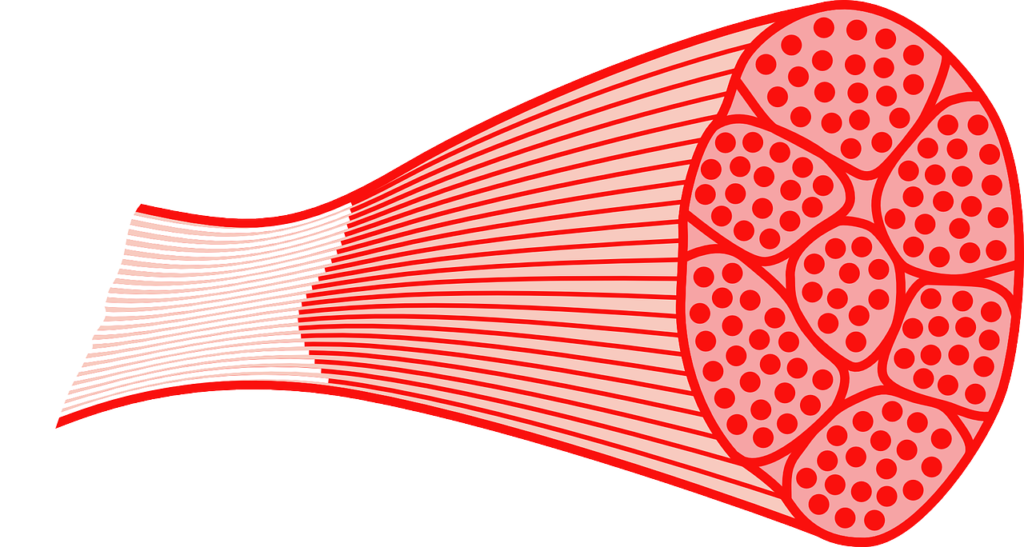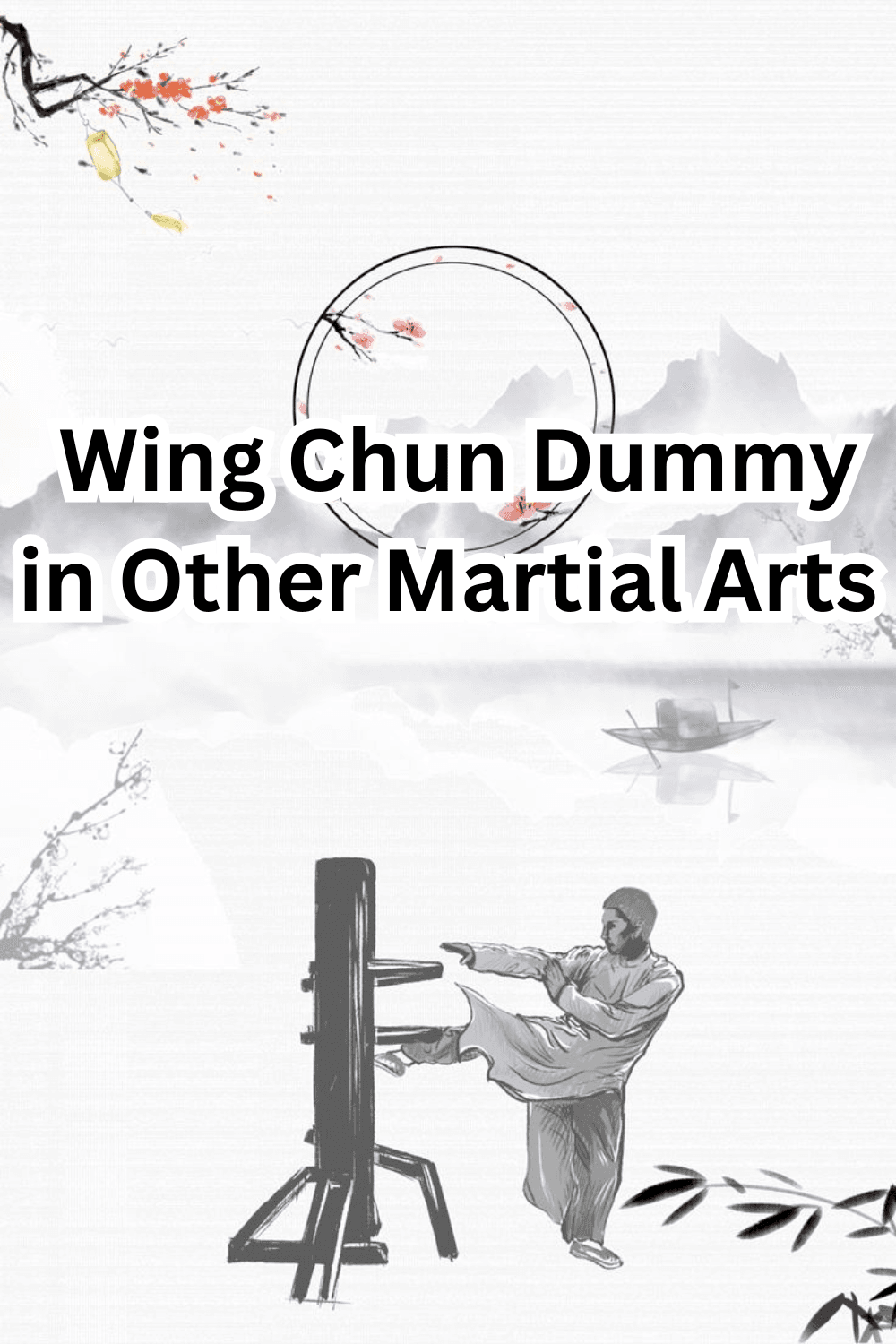Wing Chun is a traditional Chinese martial art that emphasizes efficiency, directness, and close-range combat.
Originating from Southern China, this martial art is renowned for its practical application in self-defense and its streamlined techniques that prioritize minimal movement with maximum impact.
Practitioners of Wing Chun strive to achieve a unique balance of power and precision.
That is developed through a variety of specialized training methods.
Central to Wing Chun training is the use of traditional equipment such as the wooden dummy (Muk Yan Jong) and focus mitts.
The wooden dummy, characterized by its wooden arms and leg, serves as an invaluable tool for practicing forms, refining techniques, and developing muscle memory.
Focus mitts, on the other hand, are used to enhance striking accuracy and power.
Allowing practitioners to simulate combat scenarios with a partner.
While these traditional tools are indispensable.
Incorporating unconventional training tools can significantly complement and enhance one’s practice.

For instance, resistance bands can be used to strengthen specific muscle groups and improve overall flexibility.
Crucial for executing Wing Chun techniques effectively.
Similarly, balance boards can aid in developing core stability and body coordination.
Essential for maintaining proper stance and movement during combat.
Other innovative tools include mirror training, which helps practitioners observe and correct their form in real-time, and speed balls,
Enhance hand-eye coordination and reflexes.
By integrating these unconventional tools into regular training routines.
Wing Chun practitioners can achieve a more holistic development of their skills.
This multifaceted approach not only deepens their understanding of the art but also prepares them for diverse combat situations.
Making their practice more effective and versatile.
The Role of Creativity in Wing Chun Training

Creativity plays a pivotal role in martial arts training, particularly in Wing Chun.
This traditional Chinese martial art, known for its close-combat techniques, relies heavily on precision, timing, and adaptability.
Integrating creativity into Wing Chun training can significantly enhance a practitioner’s skills.
Offer you a deeper understanding of movements and improving both strength and reflexes.
Thinking outside the box and incorporating unconventional tools into Wing Chun practice can simulate real-world scenarios that traditional training methods may not fully address.
For instance, using resistance bands can mimic the pressure and resistance encountered in an actual fight.
Helps practitioners develop stronger stances and more powerful strikes.
Similarly, incorporating balance boards in training sessions can enhance stability and core strength.
A crucial elements for maintaining control during close-combat situations.
Unconventional tools also introduce variety into training routines, preventing monotony and keeping practitioners engaged.
For example, utilizing tennis balls can improve hand-eye coordination and reflexes.
By practicing deflections and strikes against a moving target.
Wing Chun students can better prepare for the unpredictability of real-life confrontations.
This variety not only makes training more enjoyable but also ensures a more comprehensive development of skills.
Furthermore, creativity in Wing Chun training allows practitioners to explore and innovate within the framework of traditional techniques.
By experimenting with different tools and methods.
A students can discover new ways to apply their skills effectively.
This approach fosters a mindset of continuous learning and adaptation, which is essential in martial arts.
As practitioners encounter diverse scenarios and challenges.
And their ability to think creatively and respond dynamically becomes a significant asset.
In conclusion, the integration of creativity and unconventional tools in Wing Chun training can greatly enhance a practitioner’s proficiency.
By simulating real-world scenarios, improving strength and reflexes, and adding variety to routines.
The creative approaches ensure a well-rounded and engaging training experience.
This not only deepens practitioners’ understanding of Wing Chun but also prepares them for the complexities of real-life combat situations.
Resistance Bands for Strength and Flexibility

Wing Chun practitioners are constantly seeking effective ways to enhance their martial arts training, and resistance bands have emerged as an invaluable tool in this regard.
By integrating resistance bands into your Wing Chun practice, you can significantly improve both strength and flexibility, which are critical for executing techniques with precision.
Resistance bands provide variable resistance throughout the range of motion, making them ideal for a variety of Wing Chun exercises.
For example, incorporating resistance bands into your punching drills can greatly enhance the power and speed of your punches.
Simply loop a resistance band around a stationary object and hold the other end while performing straight punches.
This added resistance forces the muscles to work harder, thereby building strength and muscle endurance.
Kicking exercises can also benefit from the use of resistance bands.
Attaching a resistance band to a low anchor point and looping it around your ankle allows you to perform front kicks, side kicks, and roundhouse kicks with added resistance.
This not only strengthens the leg muscles but also enhances joint stability, which is crucial for maintaining balance and control during kicks.
In addition to punches and kicks, resistance bands can be used to improve stances and overall body stability.
For instance, performing horse stance exercises with a resistance band around your thighs can help to engage the hip muscles more effectively.

This can lead to better stance stability and reduced risk of injury, as the muscles and joints become more accustomed to handling increased loads.
The versatility of resistance bands makes them an excellent tool for targeting specific muscle groups and improving functional strength.
Whether you’re performing dynamic movements or static holds, the gradual increase in resistance helps to build muscle endurance over time.
This endurance is crucial for executing Wing Chun techniques, which often require sustained muscle engagement and control.
Incorporating resistance bands into your Wing Chun training can lead to noticeable improvements in both strength and flexibility.
Ultimately enhancing your overall martial arts performance.
By consistently challenging your muscles in new ways.
You can develop the physical attributes necessary to execute techniques with greater efficiency and power.
Tennis Balls for Hand-Eye Coordination

Incorporating tennis balls into Wing Chun practice can significantly enhance hand-eye coordination and reflexes.
This unconventional tool provides a practical and effective way to develop the quick reactions and precise movements essential for self-defense.
The simplicity and accessibility of tennis balls make them an invaluable addition to any training regimen.
One effective drill involves practitioners standing in their Wing Chun stances while a partner throws tennis balls at varying speeds and angles.
The objective is to catch the tennis balls without breaking form.
This drill not only tests the practitioner’s ability to maintain their stance but also sharpens their focus and timing.
By adjusting the speed and trajectory of the throws, the drill can be tailored to challenge practitioners at different skill levels.
Another beneficial exercise is to incorporate tennis balls during Wing Chun movements.
For instance, while executing chain punches, a practitioner can alternate catching and throwing a tennis ball between punches.
This requires maintaining the rhythm and precision of the punches while also focusing on the ball.
This multitasking helps in honing the ability to perform precise movements under pressure, a crucial skill in real-world self-defense scenarios.
Furthermore, solo drills with tennis balls can also be highly effective.
Practitioners can bounce a tennis ball against a wall and catch it while performing various stances and footwork.
This drill not only improves hand-eye coordination but also enhances agility and balance.
By continuously adjusting to the unpredictable bounce of the ball, practitioners learn to react swiftly and accurately, mirroring the unpredictability of a real opponent’s movements.
Overall, the use of tennis balls in Wing Chun training offers a dynamic and engaging method to develop the reflexes and precision needed for effective self-defense.
By integrating these drills into regular practice, practitioners can achieve a higher level of proficiency in their techniques, ultimately enhancing their overall martial arts performance.
Medicine Balls for Core Strength and Stability

Incorporating medicine balls into Wing Chun training can significantly enhance core strength and stability, which are crucial elements for maintaining balance and executing powerful strikes.
Medicine balls, available in various weights and sizes, offer versatile options for resistance training, making them an excellent addition to any Wing Chun practice.
One of the primary benefits of using medicine balls is their ability to target multiple muscle groups simultaneously.
This is particularly important in Wing Chun, where a strong and stable core is essential for efficient movement and effective force generation.
By integrating medicine ball exercises, practitioners can develop the necessary core strength and stability to maintain proper posture and balance during training and combat.
Rotational throws are a prime example of an exercise that aligns with Wing Chun training tools principles.
This exercise involves standing with your feet shoulder-width apart, holding the medicine ball with both hands, and rotating your torso to throw the ball against a wall or to a partner.
The rotational movement mimics the twisting motions used in Wing Chun strikes, helping to build the oblique muscles and enhance rotational power.
Another effective exercise is the overhead slam, which focuses on explosive power and core engagement.
To perform this exercise, hold the medicine ball overhead with both hands, then forcefully slam it to the ground while engaging the core muscles.
This movement simulates the downward force applied in certain Wing Chun techniques, such as palm strikes and chops.
Core twists with a medicine ball are also highly beneficial for developing the rotational strength and stability needed in Wing Chun.
Sit on the floor with your knees bent and feet flat, holding the medicine ball close to your chest.
Lean back slightly and rotate your torso to move the ball from side to side, tapping it on the ground beside your hips.
This exercise targets the obliques and transverse abdominis, critical muscles for maintaining control during rapid directional changes and strikes.
Overall, the integration of medicine ball exercises into Wing Chun training tools not only enhances core strength and stability but also reinforces the specific movements and principles of the martial art.
By regularly incorporating these exercises, practitioners can expect to see improvements in their balance, power, and overall performance.
Wall Bags for Punching Power and Accuracy

In the realm of Wing Chun practice, wall bags serve as an invaluable tool for developing punching power and accuracy.
These sandbags, securely attached to walls, provide a stationary target that allows practitioners to refine their punching technique and enhance their striking force.
The consistent resistance offered by wall bags enables martial artists to focus on the mechanics of their punches.
ensuring that each strike is both powerful and precise.
One of the primary benefits of using wall bags is the ability to practice hand alignment and striking angles.
Proper hand alignment is critical to avoid injury and maximize the effectiveness of each punch.
To achieve this, practitioners should ensure that their wrist is straight and their knuckles make contact with the bag, not the fingers or the palm.
This alignment minimizes the risk of wrist injuries and ensures that the force of the punch is directed through the correct part of the hand.
Striking angles are equally important when using wall bags.
Practitioners should vary their punching angles to simulate real-world combat scenarios and develop a well-rounded striking ability.
This can include straight punches, hooks, and uppercuts.
each requiring a different angle of attack.
By practicing these different angles, martial artists can improve their ability to strike effectively from various positions and distances.
When using wall bags, it is also essential to focus on the mechanics of the punch.
This involves not just the hand and arm, but the entire body.
Proper footwork and body rotation are crucial to generating maximum power.
The force of a punch should originate from the ground up, traveling through the legs, hips.
and torso before being delivered through the fist.
This full-body engagement ensures that each punch is as powerful as possible.
Incorporating wall bags into regular training routines can significantly enhance a Wing Chun practitioner’s punching power and accuracy.
By focusing on proper hand alignment, varying striking angles, and utilizing full-body mechanics.
martial artists can develop more effective and efficient striking techniques.
As with any training tool, consistency and attention to detail are key to reaping the full benefits of wall bags in Wing Chun practice.
Timing and Speed Enhancement

Speed balls, or speed bags, are often associated with boxing, yet their value in Wing Chun practice should not be underestimated.
These versatile tools are instrumental in developing timing and speed, crucial attributes for any Wing Chun practitioner.
Incorporating speed balls into your training regimen can lead to significant improvements in reaction time, coordination, and overall striking efficiency.
One of the primary exercises involves striking the speed ball with various parts of the hand.
This practice helps in familiarizing oneself with different striking surfaces and angles.
mirroring the diverse hand techniques used in Wing Chun.
Begin with basic jabs using the knuckles, then progress to using the palm, back of the hand, and even the forearm.
The constant motion and rebound of the speed ball necessitate maintaining a steady rhythm, which is essential for developing fluidity in movements.
Maintaining rhythm is vital when training with a speed ball.
The repetitive nature of the strikes trains the muscles to react swiftly and consistently, fostering muscle memory.
This rhythmic striking can be likened to the continuous flow of techniques in Wing Chun, where smooth transitions between movements are paramount.
As proficiency increases, practitioners should aim to increase their striking speed, thereby challenging their reflexes and enhancing their reaction time.
Timing, a fundamental aspect of Wing Chun, is significantly honed through speed ball exercises.
The rapid rebound of the speed ball requires precise timing to strike efficiently.
This aspect of training mimics real-world combat scenarios where timing can be the difference between landing a successful strike and missing an opportunity.
Regular speed ball training sharpens this sense of timing, enabling practitioners to anticipate movements and react with greater control and precision.
Incorporating speed balls into Wing Chun practice not only enhances striking speed but also builds better control and faster reflexes.
By dedicating consistent effort to speed ball exercises, practitioners can achieve a harmonious balance of speed, timing, and accuracy.
all of which are pivotal to mastering Wing Chun.
Combining Traditional and Unconventional
Wing Chun Training
Tools

Integrating both traditional and unconventional tools into Wing Chun training tools routines can significantly enhance one’s mastery of the art.
This holistic approach addresses multiple facets of martial arts training, including strength, flexibility, coordination, and speed.
By combining these diverse tools, practitioners can achieve a more comprehensive and well-rounded development in their practice.
Traditional tools, such as the wooden dummy (Muk Yan Jong) and the long pole (Luk Dim Boon Kwun), have long been pillars in Wing Chun training.
These tools help in refining techniques, improving structure, and developing the necessary muscle memory for effective execution.
They also provide a historical context, connecting practitioners to the rich heritage of Wing Chun.
On the other hand, unconventional tools such as resistance bands, weighted vests, and agility ladders offer new dimensions to training.
Resistance bands can enhance muscle strength and flexibility, while weighted vests add an extra challenge, increasing endurance and power.
Agility ladders are excellent for improving footwork and coordination, ensuring that practitioners can move swiftly and efficiently during sparring or self-defense situations.
The combination of these tools allows practitioners to address specific training needs while maintaining a balanced approach.
For instance, incorporating resistance bands into traditional wooden dummy drills can amplify the benefits by adding resistance, thereby increasing strength and endurance.
Similarly, using agility ladders alongside traditional footwork drills can significantly improve coordination and speed.
Encouraging experimentation with various tools can lead to discovering what works best for individual training goals.
Some practitioners may find that unconventional tools complement their traditional training, leading to faster progress and enhanced performance.
Others might discover unique ways to integrate these tools into their routines, making their practice more engaging and effective.
Ultimately, the key to mastering Wing Chun lies in a well-rounded approach that embraces both traditional and unconventional methods.
By doing so, practitioners can develop a deeper understanding of the art, ensuring continuous growth and improvement in their journey.
Let us know about your thoughts on Wing Chun training tools.



